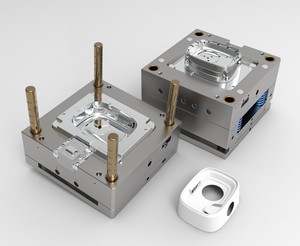Introduction to LED Light Plastic Injection Mould
The LED light plastic injection mould is an essential component in the production of high-quality LED lighting fixtures. This manufacturing process utilizes advanced plastic injection moulding techniques to create durable, lightweight, and intricately designed moulds that are pivotal for modern lighting solutions. They cater to various industries, including commercial, residential, and automotive applications, ensuring optimal performance while being environmentally friendly.
Types of LED Light Plastic Injection Mould
- Standard Moulds: Typically used for manufacturing basic LED housing and cover components.
- Customized Moulds: Engineered to meet specific design and performance requirements based on individual customer needs.
- Multi-cavity Moulds: These moulds are designed to produce multiple parts in a single cycle, enhancing productivity and efficiency.
- Hot Runner Moulds: Ideal for applications requiring consistent and high-quality output, featuring a heated manifold to reduce waste.
Applications of LED Light Plastic Injection Mould
LED light plastic injection moulds find extensive applications across various sectors:
- Commercial Lighting: Used in the production of shop lights, downlights, and panel lights.
- Residential Lighting: Essential for creating fixtures such as chandeliers, wall sconces, and decorative lamps.
- Automotive Lighting: Plays a crucial role in producing headlamps, indicators, and tail lights for vehicles.
- Outdoor and Landscape Lighting: Moulds enable the fabrication of durable fixtures designed to withstand weather conditions.
Features and Advantages of LED Light Plastic Injection Mould
The LED light plastic injection mould boasts several features that make it an advantageous choice for manufacturers:
- Precision Engineering: Offers high accuracy in molding, ensuring every piece meets exact specifications.
- Versatile Materials: Compatible with various plastics, including polycarbonate and ABS, allowing for enhanced strength and durability.
- Cost-Effective Production: Reduces overhead through efficient mass production, ultimately lowering the price point for end-users.
- Environmental Benefits: Plastic injection moulding is typically less resource-intensive than other manufacturing techniques, contributing to sustainability.
- Reduced Lead Times: Quick turnaround from design to production ensures a responsive supply chain.


















































